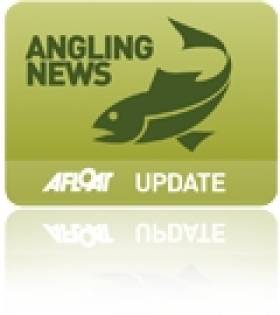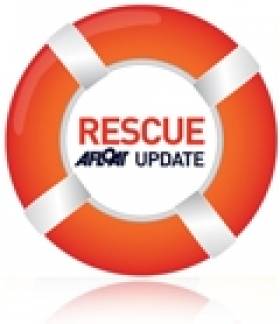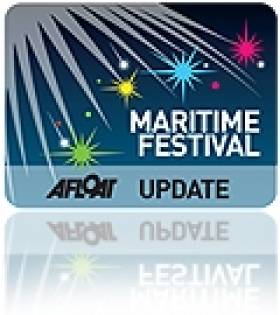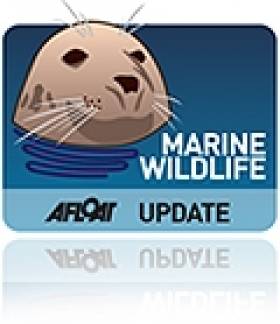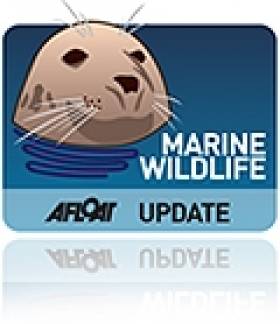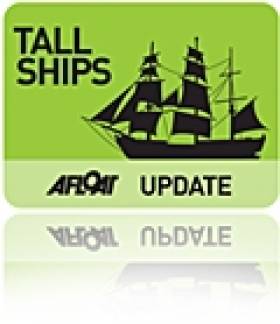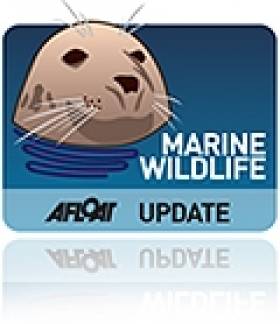Displaying items by tag: Hook Head
Bass Fail to Show at First Hook Bass Angling Festival
#ANGLING - Bitterly cold weather and some hungry marine mammals kept the bass away from the inaugural Hook Bass Angling Festival in Wexford last weekend, as The Irish Times reports.
The angling went on regardless, however, with Mark Baker from Co Meath hooking a 1.5kg 'schoolie' of a flounder to take top prize of a five-day holiday at Grangecourt Holiday Homs and a day's fishing with Jim Foley.
All taking part enjoyed the weekend despite the absence of the titular fish, and promised to return next year - for which the dos and don'ts will be ironed out, according to Cathy Howlin of Hook Tourism.
Meanwhile, the weekend also featured an evening talk by Dr Ed Fahy who discussed the threat to Ireland's sea bass should the fishery be opened to commercial interests, and argued the case for bass angling tourism as a greater boon for the economy.
German Tourist, Yachtsman Rescued in Separate Boating Incidents
#RESCUE - RTÉ News reports that a German tourist missing after his cruiser ran aground on Lough Ree last night has been found safe and well.
The man was one of three on board the vessel that grounded close to Barley Harbour.
Lough Ree RNLI lifeboat recovered the other two men from the vessel but the third had already left on a dinghy to find help.
He was located by gardaí on an Island in the lough around midnight.
Meanwhile, one person was rescued from a yacht off Hook Head in stormy force seven winds and massive sea swells late last night, according to The Irish Times.
The man, who was reportedly the only person on board the yacht, was airlifted to safety by UK search and rescue helicopter.
RNLI adds:
Lough Ree RNLI rescued two German men from a cruiser that ran aground north of Priests Island close to Barley Harbour in County Longford yesterday evening (Wednesday).
The charity's volunteer crew based at Coosan Point in Athlone launched their inshore lifeboat at 8.45pm (Wednesday 15 August) following a report that a vessel had got into difficulty on the lough on the River Shannon.
A major search and rescue operation involving Lough Ree RNLI, Lough Ree Rescue, Athlone Sub Aqua Club and the Sligo Coast Guard helicopter Rescue 118 was mounted in conditions described at the time as windy, with a force six wind having prevailed throughout the day.
A third man who had left the cruiser and boarded a dinghy to raise the alarm was reported missing.
Lough Ree RNLI located the cruiser and arrived on scene within 20-25 minutes where lifeboat crew including Kieran Sloyan, Lee Carney and Donal Heraghty removed the two German men from their vessel.
They were then put on the lifeboat and brought safely ashore to Lanesborough where they were met by Gardai.
Lough Ree RNLI then resumed a search for the third man with the other search and rescue agencies.
He was subsequently located safe and well around midnight on Cloone Skert by Gardai who had heard shouts from the shore at north Portrunny in Roscommon.
Lough Ree Lifeboat Operations Manager Damian Delaney said: 'The three tourists particularly the man who had left the boat to look for assistance were very lucky as weather conditions were pretty severe at the time. Thankfully, there was a good co-ordinated response and a good turnout of people which resulted in a positive outcome. As time went on and it got dark and darker we were very concerned for the third man so it was great that he was brought ashore.'
#MARITIME FESTIVALS - The Irish Whale and Dolphin Group (IWDG) will have a stand at the Maritime Matters Festival in Hook Head, Co Wexford this bank holiday weekend from 5-7 May.
Representing the IWDG are Deirdre Slevin and Paddy Roche, who will be on hand to present photos of recent whale activity off the Wexford coast, as well as giving the opportunity to look out for whales and dolphins from the watch tower.
Hook Head has already witnessed a wide range of cetacean activity in 2012, with the likes of fin whales, humpback whales, minke whales, common and Risso's dolphins, harbour porpoise and basking sharks visiting the waters of the 'Sunny Southeast'.
The annual Maritime Matters Festival will also feature displays from The Irish Coast Guard, Irish Water Safety and the Irish Seal Sanctuary, as well as displays and manoeuvres on the water by the Irish Marine Rescue Services.
Cick HERE for more details on the weekend programme of entertainment and outdoor food on the Hook Lighthouse website.
Humpback Whales A Surprise April Sighting Off West Cork
#MARINE WILDLIFE - At least two humpback whales have been spotted by birdwatchers off Galley Head in West Cork, according to the Irish Whale and Dolphin Group (IWDG).
"This is the first time since the large whale project commenced in 1999 that humpback whales have been recorded along the Irish south or coast during April, which has been up till now the one month in which large whales have consistently been absent from our inshore waters," said IWDG sightings co-ordinator Pádraig Whooley.
The timing of this sighting was described by Whooley as "unusual". He also confirmed that one of the whales was recorded off Hook Head in Co Wexford in late January and early February of this year, which dispells the hypothesis that large whales leave Irish waters after the herring season in the southeast.
Meanwhile, Whooley sounded a word of caution for anyone hoping to spot the humpbacks for themselves, as the "sheer numbers of basking sharks about" often result in false sightings.
The Irish Whale and Dolphin Group has more on the story, including images, HERE.
First Humpback Whale Sighting of 2012 Is a Newcomer
#MARINE WILDLIFE - Ireland's first humpback whale of the year has been spotted off the Wexford coast.
The sighting was made yesterday by whale-watchers among a pod of fin whales some three miles south of Hook Head, according to TheJournal.ie.
The Irish Whale and Dolphin Group (IWDG) has also confirmed that the humpback is a new sighting in Irish waters, and has been designated the reference HBIRL18.
RTÉ News has images of the humpback whale HERE.
Fin Whale 'Feeding Frenzy' Off Hook Head
#MARINE WILDLIFE - A "feeding frenzy" involving a pod of fin whales was spotted off Hook Head in Co Wexford last week, The Irish Times reports.
And according to Andrew Malcolm of the Irish Whale and Dolphin Group (IWDG), two of the whales were in the same location almost exactly a year ago.
Malcolm, who was with a group on board the Rebecca C, used photographs of the whale's dorsal fins to compare records for the confirmation.
The pod of six fin whales was seen feeding some 3km southeast of Hook Head, attracted by the herring spawning grounds in the area.
More than 30 other cetaceans, including common dolphins, porpoises and a minke whale, were sighted on the trip.
The Irish Times has more on the story HERE.
Fin Whales Could Be Wexford Bound
#MARINE WILDLIFE - The Enniscorthy Guardian reports that the fin whales that have been sighted off Tramore in recent weeks may soon make their way towards the Wexford coast.
Afloat.ie recently reported that Waterford was the 'best place to be' for whale watching, with the Irish Whale and Dolphin Group (IWDG) confirming fin whale sightings along a 20-mile stretch from Stradbally to Brownstone Head.
Cetacean fans are being advised to keep an eye on the coast from Hook Head to Brownstown headland to catch a glimpse of the fins, which are renowned for their six-foot whale blow.
Whale watchers are also urged to report any sightings to the IWDG online at www.iwdg.ie to help keep its database up to date.
Dunmore East Bids TallShips Farewell
As the Russian 'A' class Mir passed the LE Aoife off Dunmore East in mid-morning, the largest tall ship of the festival headed the start of the Parade of Sail, writes Jehan Ashmore.
Crowds left their cars in fields outside Dunmore East and descended into the harbour and surrounding headlands to witness the highlight of the four-day festival. Adding to the scene were the numerous leisure-craft, yachts and intrepid kayakers that gathered to greet the procession which took some two hours to pass the fishing harbour.
No sooner had the fully-rigged ship Mir had slipped beyond the anchored naval vessel that the gaff schooner Johanna Lucretia, under full sail came closer into view. She was closely followed by the Ocean Youth Trust Scotland's Bermudan cutter Alba Explorer.

The Russian 'A' class Mir passing the LE Aoife off Dunmore East. Photo: Jehan Ashmore
Of all the 45 tallships participating the Columbian Navy's barque ARC Gloria presented the most colourful entrant. She proudly flew a large horizontal tricolor of yellow, blue and red representing the South American nation.
When it came to the turn of the Europa to pass the LE Aoife, the tug Bargarth gave a wonderful send-off with the traditional display of water jets shooting sky-high, nearly reaching the top of the three-masted barque.
Marking the tail-end of the parade was the Jubilee Sailing Trust's Lord Nelson, another barque that departed the estuary with the Hook Head Lighthouse forming a majestic backdrop.
At this stage several of the large tallships could be seen on the far horizon in preperation to the start of the first race leg of this years Tall Ships Races....next port of call Greenock!
- Waterford
- ship
- Dunmore East
- Lord Nelson
- Waterford Estuary
- LE Aoife
- Sail Training International
- Jubilee Sailing Trust
- Tug
- Hook Head
- Tall
- JOHANNA LUCRETIA
- TallShips
- Waterford Harbour
- JST
- Europa
- Fullyrigged ship
- STI
- ARC Gloria
- Hook Head Lighthouse
- Mir
- Gaff schooner
- Ocean Youth Trust Scotland
- Bermudan cutter
- Alba Explorer
- Columbian Navy barque
- Bargarth
- Fastnet Shipping
Requirements for Recreational Craft at Tall Ships Races
The latest Marine Notice from the DTTAS includes important information for recreational craft expected to attend the Tall Ships Races in Waterford from 30 June to 3 July.
Race organisers and the Waterford harbour master have issued an approved water safety plan for the marshalling of spectator boats for the time the tall ships are in port and for the start of the race off Hook Head.
Skippers and crew must comply with all instructions and be aware of their obligations under existing maritime legislation (regarding avoidance of collisions, preventing reckless behaviour and ensuring correct safety equipment is on board).
Boat owners intending to visit should contact the harbour master for details on restricted areas and berthing spots via the Port of Waterford website or directly at 051 974 907.
Restrictions are also in place for passenger boats and ships. Only fully licenced vessels with plying limits listing Waterford as a point of departure are allowed to operate during the event. Temporary changes in plying limits can be made via the Marine Survey Office before 15 June.
Further details are available on Marine Notice No 28 of 2011 which is available to read or download HERE.
Stunning Images of Feeding Fin Whales
The Irish Times has stunning photographs of fin whales and dolphins feeding off Hook Head in Co Wexford captured by animal wildlife photographer George Karbus.
Czech-born Lahinch resident Karbus, who specialises in wildlife photography, said: “It is really hard to capture images of fin whales because they move incredibly fast, so to see them together feeding in one place was amazing and I was able to get some special images.”
Meanwhile, the Irish Whale and Dolphin Group has released its first study on the ecology of fin whales in Irish waters.
Using the photo identification catalogue collected by the group since 2001, some 62 individual fin whales were identified - 11 of them being return visitors.



























